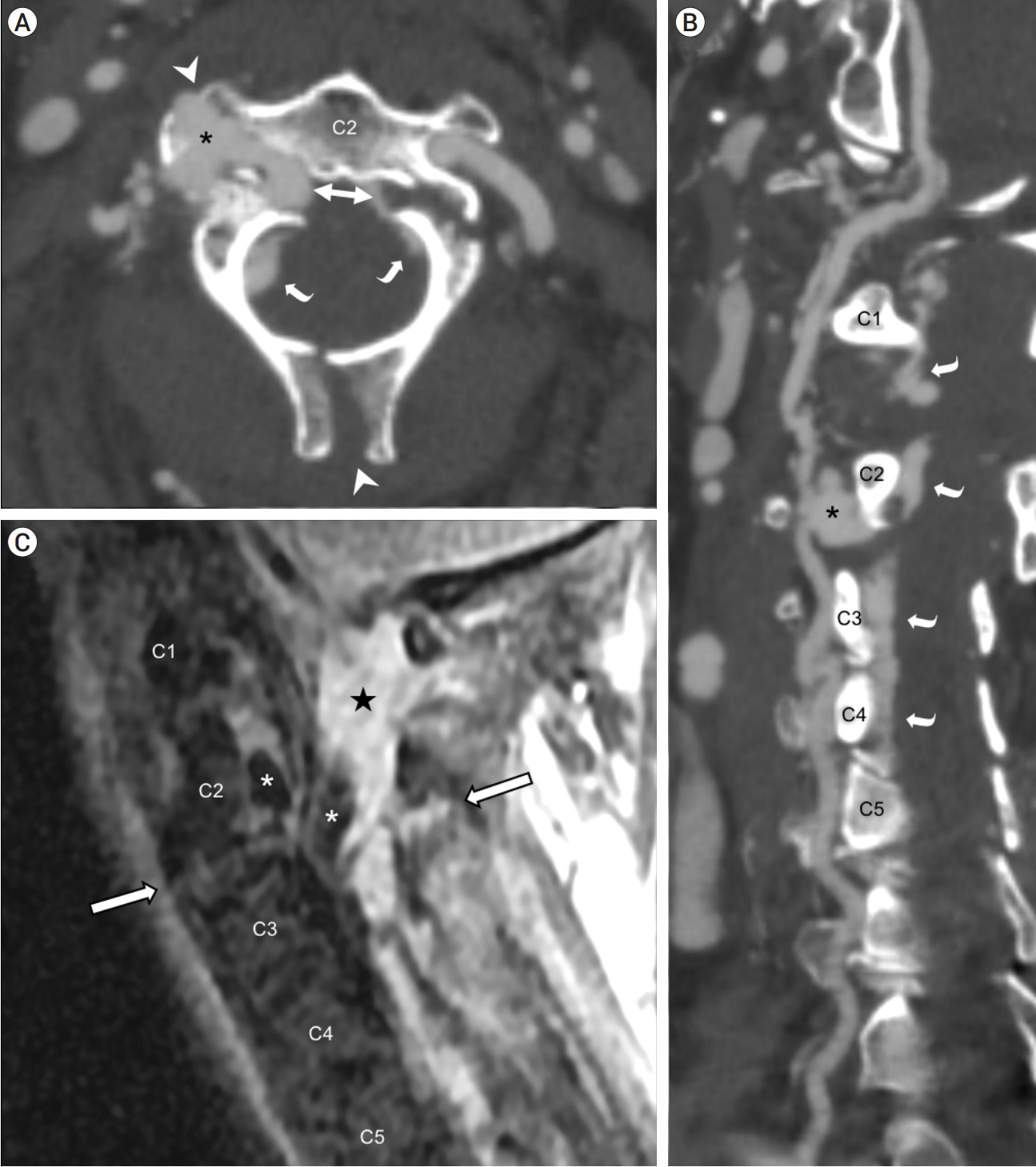J Cerebrovasc Endovasc Neurosurg.
2022 Sep;24(3):291-296. 10.7461/jcen.2022.E2021.10.002.
Deconstructive repair of a traumatic vertebrovertebral arteriovenous fistula via a contralateral endovascular approach
- Affiliations
-
- 1Department of Neurology, Mount Sinai Hospital, New York City, NY, USA
- 2Department of Radiology, Division of Neuroradiology, Massachusetts General Hospital, Harvard Medical School, Boston, MA, USA
- 3Department of Neurosurgery, Massachusetts General Hospital, Harvard Medical School, Boston, MA, USA
- 4Department of Neurology, Massachusetts General Hospital, Harvard Medical School, Boston, MA, USA
- KMID: 2533682
- DOI: http://doi.org/10.7461/jcen.2022.E2021.10.002
Abstract
- Vertebrovertebral arteriovenous fistulas (VVAVFs) are rare entities that lack consensus guidelines for their management. Our case describes the successful treatment of a traumatic VVAVF via a contralateral deconstructive endovascular approach. A 64-year-old female presented following a traumatic fall. Computed tomography angiogram highlighted a 2 cm pseudoaneurysm of the right vertebral artery (VA) with epidural contrast enhancement and a hematoma with flow voids within the epidural space. Digital subtraction angiography showed a VVAVF at C2-3 with retrograde filling of the distal right VA. Having undergone several unsuccessful passes of the proximal dissection flap in the right VA, the patient underwent a contralateral deconstructive approach with correction of the VVAVF without complication. The remaining feeding branches had occluded after 1 week. The patient made a complete recovery without neurological sequelae at 3-month follow-up.
Figure
Reference
-
1. Aljobeh A, Sorenson TJ, Bortolotti C, Cloft H, Lanzino G. Vertebral arteriovenous fistula: a review article. World Neurosurg. 2019; Feb. 122:e1388–97.
Article2. Berenstein A, Lasjaunias P, ter Brugge KG. Vertebro-vertebral arteriovenous fistulae. In : Berenstein A, Lasjaunias P, Brugge KG, editors. Surgical Neuroangiography. New York: Springer-Verlag;2004. p. 743–51.3. Groen RJ, Groenewegen HJ, van Alphen HA, Hoogland PV. Morphology of the human internal vertebral venous plexus: a cadaver study after intravenous araldite CY 221 injection. Anat Rec. 1997; Oct. 249(2):285–94.
Article4. He H, Li Q, Du M, Chen K, Li X, Li J, et al. Endovascular and surgical approaches of iatrogenic vertebrovertebral arteriovenous fistula. J Vasc Surg Cases Innov Tech. 2021; Feb. 7(2):206–10.
Article5. Mitchell J. Vertebral artery blood flow velocity changes associated with cervical spine rotation: a meta-analysis of the evidence with implications for professional practice. J Man Manip Ther. 2009; 17(1):46–57.
Article
- Full Text Links
- Actions
-
Cited
- CITED
-
- Close
- Share
- Similar articles
-
- Deconstructive repair of a direct carotid-cavernous fistula via a posterior circulation retrograde approach
- Endovascular Stent-Graft Treatment of a Traumatic Vertebral Artery Pseudoaneurysm and Vertebrojugular Fistula
- Cervical spinal extradural arteriovenous fistula successfully treated using transarterial balloon-assisted coil embolization
- Post-Traumatic Arteriovenous Fistula of the Scalp
- Stereotactic radiosurgery for dural arteriovenous fistula



